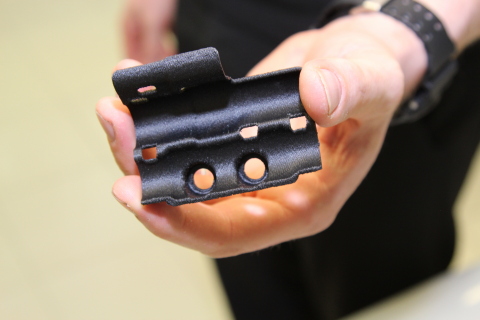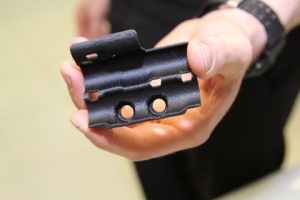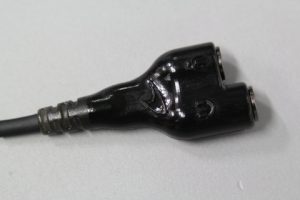
Latest News
April 20, 2017
McLaren Racing will use 3D printing to produce parts for its 2017 Formula 1 MCL32 race car as part of its efforts to reduce weight and increase the speed of its design modifications.
 A hydraulic line bracket for the MCL32 race car. Image: Stratasys
A hydraulic line bracket for the MCL32 race car. Image: StratasysMcLaren will expand the use of its 3D printing solutions from Stratasys as part of the initiative.
“We are consistently modifying and improving our Formula 1 car designs, so the ability to test new designs quickly is critical to making the car lighter and more importantly increasing the number of tangible iterations in improved car performance,” said Neil Oatley, design and development director at McLaren Racing. “If we can bring new developments to the car one race earlier — going from new idea to new part in only a few days — this will be a key factor in making the McLaren MCL32 more competitive. By expanding the use of Stratasys 3D printing in our manufacturing processes, including producing final car components, composite lay-up and sacrificial tools, cutting jigs, and more, we are decreasing our lead times while increasing part complexity.”
McLaren has used 3D printing for a number of parts and assemblies on the vehicle, including:
- A hydraulic line bracket made out of carbon-fiber-reinforced nylon that was printed on a Fortus 450mc printer in just four hours. Traditional processes would have taken two weeks to produce the bracket.
- A flexible radio harness location boot to join harness wires for a new communication system. The boot was printed using the Stratasys J750 printer.
- Brake cooling ducts made of carbon fiber that were created with 3D-printed wash-out cores.
- A rear wing flap extension made of carbon fiber-reinforced composites that was built using a 3D-printed lay-up tool produced on the Fortus 900mc printer.
 A radio harness printed for the McLaren MCL32 Formula 1 car. Image: Stratasys
A radio harness printed for the McLaren MCL32 Formula 1 car. Image: Stratasys“Formula 1 is one of the world’s best proving grounds for our additive manufacturing solutions. As the Official Supplier of 3D Printing Solutions to the McLaren-Honda Formula 1 team, we are working closely together to solve their engineering challenges in the workshop, in the wind-tunnel, and on the track. We believe that this, in turn, will enable us to develop new materials and applications that bring new efficiencies and capabilities to McLaren Racing and other automotive designers and manufacturers,” said Andy Middleton, president, Stratasys EMEA.
Stratasys and McLaren announced they were partnering back in January. A number of other Formula 1 teams use 3D printing for prototyping and production parts, including Force India, Lotus F1, Red Bull Racing, and Williams.
Source: Stratasys
Subscribe to our FREE magazine, FREE email newsletters or both!
Latest News
About the Author
Brian Albright is the editorial director of Digital Engineering. Contact him at [email protected].
Follow DE





